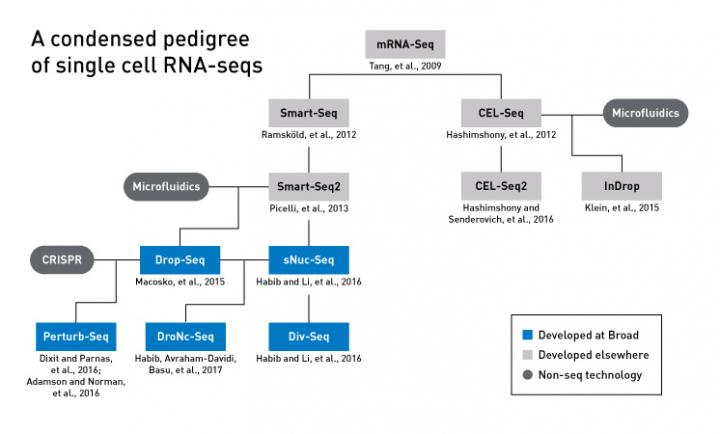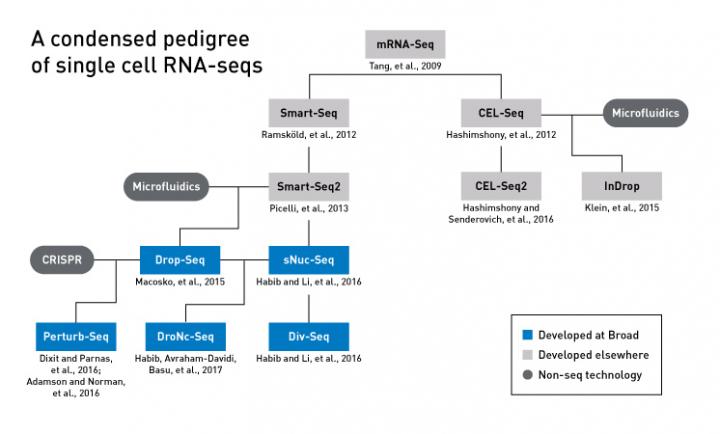
Credit: Susannah M. Hamilton and Tom Ulrich, Broad Communications
Last year Broad researchers described a single-nucleus RNA sequencing method called sNuc-Seq. This system enabled researchers to study the gene expression profiles of difficult-to-isolate cell types as well as cells from archived tissues. Now a Broad-led team has overcome a key stumbling block to sNuc-Seq's widespread use: scale.
In a paper published in Nature Methods, postdoctoral fellows Naomi Habib, Inbal Avraham-Davidi, and Anindita Basu; core institute members Feng Zhang and Aviv Regev; and their colleagues reveal DroNc-Seq, a single-cell expression profiling technique that merges sNuc-Seq with microfluidics, allowing massively parallel measurement of gene expression in structurally-complicated tissues.
Researchers struggled in the past to study expression in neurons and other cells from complex tissues, like the brain, at the single-cell level. This was because the procedures for isolating the cells affected their RNA content and did not always accurately capture the true proportions of the cell types present in a sample. Moreover, the procedures did not work for frozen archived tissues. sNuc-Seq bypassed those problems by using individual nuclei extracted from cells as a starting point instead.
sNuc-Seq, however, is a low-throughput technology, using 96- or 384-well plates to collect and run samples. To scale the method up to the level needed in order to efficiently study thousands of nuclei at a time, the team turned to microfluidics. Their inspiration: Drop-Seq, a single-cell RNA-seq (scRNAseq) technique that encapsulates single cells together with DNA barcoded-beads in microdroplets to greatly accelerate expression profiling experiments and reduce cost.
To test the new method's accuracy and speed, the team successfully benchmarked DroNc-Seq against Drop-Seq, sNuc-Seq, and other lower throughput scRNAseq methods using a mouse cell line and mouse brain tissue. They also applied it to human brain tissue collected by the Genotype-Tissue Expression (GTEx) Project, finding that they could a) identify expression signatures unique to neurons, glial cells, and other cell types in the brain (including rare types), and b) differentiate between closely related cell subtypes.
DroNc-Seq's robustness and accuracy suggest it could be a valuable addition to the stable of technologies being used as part of the Human Cell Atlas and other scRNAseq-based efforts.
###
Support for this study came from the Klarman Cell Observatory, the National Institute of Mental Health, the National Cancer Institute, the National Science Foundation, the Howard Hughes Medical Institute, and other sources.
Media Contact
David Cameron
[email protected]
617-714-7184
@broadinstitute
https://www.broadinstitute.org/
Original Source
https://www.broadinstitute.org/news/dronc-seq-microfluidic-single-nucleus-rna-sequencing





